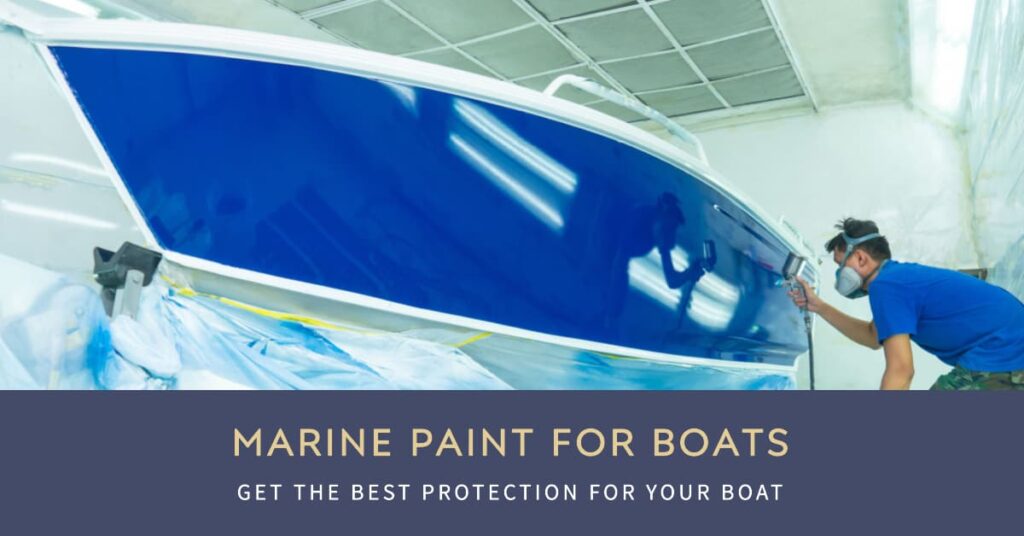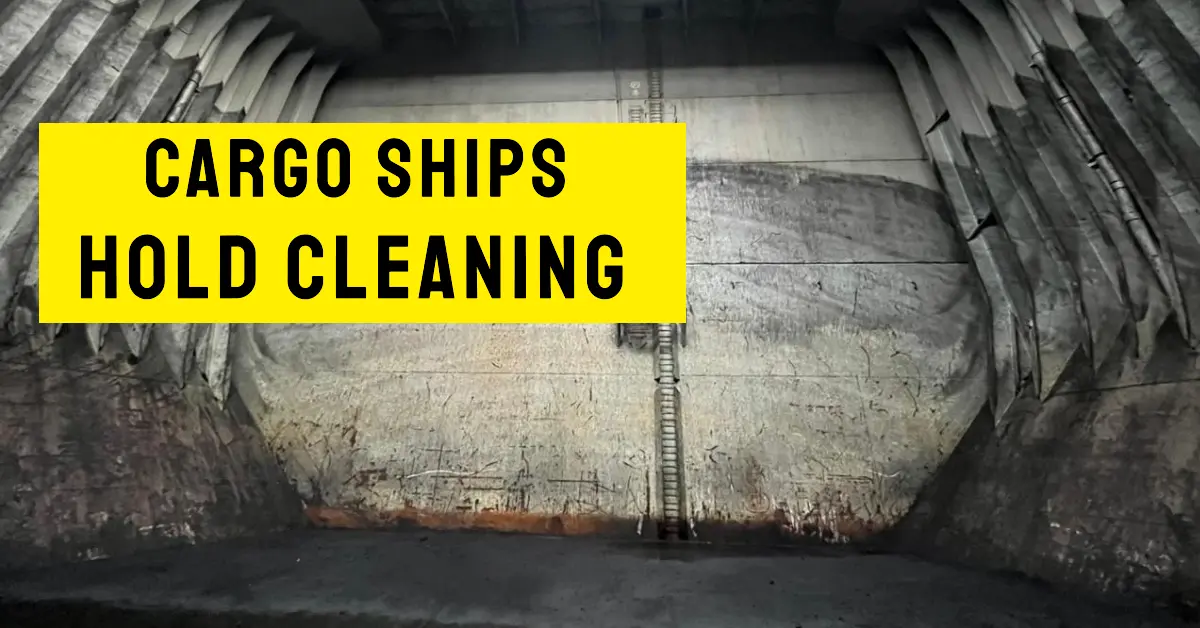Whether you’re a seasoned boater or a newbie who just purchased your first vessel, the magic of marine paint for boats can’t be overstated.
This specialized paint offers an incredible layer of protection and flair to your boat that standard paints can’t. But what exactly is it? How does it work? What are its benefits, drawbacks, and costs? Let’s dive in, shall we?

Understanding How Marine Paint Works
Unlike regular paint, marine paint is formulated to handle the harsh conditions of the sea. It is both waterproof and salt-resistant, ensuring that your boat can weather any storm. In the same way a captain navigates rough seas, marine paint has to tackle high moisture, corrosive salt, and intense UV radiation.
Think of it like sunscreen for your boat. Just as you’d protect your skin from harmful UV rays with sunscreen, marine paint does the same for your boat. It forms a protective shield, keeping the structural integrity of your boat intact and extending its lifespan. Let’s explore this further in our comprehensive guide on marine paint for fiberglass.
| Feature | Description |
|---|---|
| Waterproof | Marine paint forms an impermeable layer that prevents water seepage. |
| UV Resistant | It can resist harmful UV rays, minimizing fading and aging effects. |
| Salt Resistant | The paint is designed to withstand harsh sea salt, preventing corrosion. |
| Enhances Look | With a variety of finishes and colors, marine paint can significantly beautify your boat. |
| Boosts Longevity | By providing a protective layer, marine paint prolongs the lifespan of your boat. |
Types of Marine Paints for Boats
Navigating the world of marine paints can be a bit like sailing in uncharted waters. There’s a wide variety of types available, each suited to different needs and conditions. Let’s chart our course through the most common ones:
Antifouling Paint
One of the most common types of marine paints, antifouling paint, has a specific purpose: to prevent marine organisms like barnacles and algae from attaching themselves to the hull of your boat. If you’ve ever wondered why the hulls of boats are often painted red, you have antifouling paint to thank. It’s typically copper-based and gives off that distinct hue.
Topside Paint
Topside paint is used on the portion of the boat that stays above the waterline. It’s designed to withstand harsh weather conditions, UV rays, and the occasional splash of seawater. Topside paint is available in a plethora of colors and finishes, so you can personalize your boat to reflect your style.
Bottom Paint
Like its name suggests, bottom paint is used on the part of the boat that remains underwater. It’s designed to withstand continuous exposure to water, resisting both moisture damage and the corrosive effects of saltwater. Most bottom paints also have antifouling properties to keep your boat free from unwanted marine hitchhikers.
Epoxy Paint
Epoxy paint is a two-part paint that, once mixed, begins a chemical reaction resulting in a hard, durable finish. It provides an excellent protective layer and is resistant to water, UV rays, and various chemicals. While it can be a bit more challenging to apply due to its fast drying time, its durability makes it a popular choice for many boat owners.
Enamel Paint
Enamel paint is an oil-based paint known for its glossy finish and durability. It’s less expensive than many other types of marine paint, making it a good choice for those on a budget. However, it’s not quite as durable as some other options and may require more frequent touch-ups.
Understanding the different types of marine paints and their uses can help you make an informed decision about the best paint for your boat. After all, a well-chosen and well-applied marine paint job can keep your vessel looking shipshape for years to come.
Non-Slip Deck Paint
Safety is paramount when you’re out on the water, and non-slip deck paint plays a crucial role in ensuring that your boat’s deck remains safe even in wet conditions. This type of marine paint includes a gritty substance – often sand or rubber additives – that provides a textured surface on the deck of your boat. This texture reduces the risk of slipping, making it safer to move around on the deck, especially when it’s wet.
Non-slip deck paint is highly durable and able to withstand the heavy foot traffic that boat decks often experience. It’s also resistant to the harsh marine environment and the damaging effects of UV rays. Available in a variety of colors, non-slip deck paint not only increases the safety of your boat but can also enhance its aesthetic appeal.
Remember, choosing the right paint type for your boat is critical in ensuring its durability, safety, and aesthetics. Non-slip deck paint is just one of many options that can make your boating experience safer and more enjoyable. Check our article listing the best non-slip deck paints for boats.
Benefits of Marine Paint for Boats
Marine paint comes with a wave of benefits. From the obvious protective qualities to the aesthetic appeal it provides, it is a fantastic investment for every boat owner. Here are a few reasons why marine paint is making waves:
- Longevity: Marine paint protects the exterior of your boat, extending its lifespan. With proper application and maintenance, your boat could look like it’s fresh off the showroom floor even after years at sea.
- Aesthetics: Marine paint isn’t just practical, it’s also beautiful. With a wide range of colors and finishes available, you can customize your boat to reflect your personality.
- Increase in Resale Value: Well-maintained boats fetch a better price in the used boat market. A boat with a fresh coat of marine paint will attract more buyers and command a higher price.
However, like any sea voyage, there can be storms along the way. The journey with marine paint isn’t always smooth sailing.
Disadvantages of Marine Paint for Boats
While the benefits are bountiful, it’s also important to consider the potential pitfalls. Here are a few disadvantages of marine paint:
- Cost: Marine paint is pricier than standard paint due to its specialized formula. However, when you weigh the long-term benefits against the initial costs, it’s a worthwhile investment.
- Application Process: Applying marine paint is a meticulous process that requires patience and skill. If you’re not up to the task, professional application can further increase the cost.
To better understand this, let’s anchor at our detailed guide on how to paint a fiberglass boat.
The Price of Marine Paint for Boats
Now, let’s talk about money. The cost of marine paint can range widely based on the quality, type, and brand. On average, a gallon of marine paint can cost anywhere from $30 to over $100. But remember, a quality marine paint job is an investment that can save you money in the long run by extending the life of your boat and increasing its resale value.
| Quality | Price Range per Gallon |
|---|---|
| Low | $20 – $40 |
| Medium | $40 – $70 |
| High | $70 – $100+ |
Top Marine Paint Brands
When it comes to marine paint for boats, the quality is as important as the application process. High-quality paint can ensure durability, better protection, and a fantastic finish. Here are some of the top brands in the industry renowned for their marine paints:
1. Interlux
Interlux has a long-standing reputation in the marine paint industry. They offer an extensive range of products, including antifouling, topside, varnishes, and undercoats. Known for their quality and innovation, Interlux paints are highly regarded by both professionals and DIY boat owners.
2. Pettit Paint
Pettit Paint is another trusted name, with a history stretching back over a century. They offer an array of marine paints, including antifouling, topside, and varnish options. Pettit’s paints are known for their easy application and excellent coverage.
3. Awlgrip
Awlgrip is often the go-to brand for professional boat painters due to the durability and high gloss finish of their paints. They offer an extensive range of colors in their topside paint line, so you can achieve exactly the look you desire.
4. TotalBoat
TotalBoat, as their name suggests, offers a comprehensive range of products designed for every aspect of boat care. Their marine paints are user-friendly, making them a popular choice for DIY enthusiasts. They provide a range of options, including topside, bottom, and specialty paints including non-slip deck paints.
5. Sea Hawk
Sea Hawk is renowned for its range of antifouling paints. They offer a variety of solutions, including biocide-free options, making them an environmentally friendly choice.
Remember, while these brands have proven their quality over time, the best paint for your boat will depend on your specific needs, the type of boat, and the conditions it will face. Make sure to consider all these factors when choosing your marine paint.
6. Jotun
Jotun is a global leader in marine paints and coatings. With a rich history and a presence in over 100 countries, they offer a variety of marine paints including antifouling, topside, and tank coatings. Jotun is renowned for its commitment to quality, innovation, and environmental responsibility, making their products trusted in the marine industry worldwide.
7. West Marine
West Marine is a well-established brand that offers a comprehensive range of marine equipment, including paints and finishes. They offer both their own branded marine paints and a selection from other top brands. West Marine’s products are noted for their quality, durability, and competitive pricing, making them a popular choice among boat owners.
Common Application Methods
Navigating the application process for marine paint can be tricky. It’s a task that requires patience, precision, and a good understanding of the various techniques available. Here are the most common methods:
Brush and Roller Technique
This method is ideal for beginners and those who prefer a hands-on approach. It involves applying the paint manually using a brush or roller. This technique is cost-effective but can be time-consuming.
Spray Painting
For a smooth and even finish, spray painting is the way to go. This method requires specialized equipment and more skill but provides a professional result. A tip to remember: always spray in a well-ventilated area and use protective gear.
Professional Application
If the DIY approach isn’t for you, hiring a professional is another viable option. Although this is the most expensive route, it guarantees a flawless finish.
For a step-by-step guide on how to apply marine paint, you can check out our article on how to paint a fiberglass boat.
Removing Old Marine Paint
At times, the old paint on your boat may start to peel or simply look worn out. In such cases, you’ll need to remove the existing paint before applying a fresh coat. This is a crucial step as fresh paint adheres better to a clean, smooth surface. If you’re interested in learning more about this process, our guide on how to remove bottom paint from a fiberglass boat is a must-read.
Why Ships Are Painted Red Below the Waterline
While on the subject of marine paint, you might wonder why ships are often painted red below the waterline. This is actually due to a specific type of marine paint known as antifouling paint. This paint is used to prevent barnacles, seaweed, and other marine organisms from attaching to the hull of the ship. The red color is traditionally used for this paint, giving ships their distinctive look below the waterline. Curious to learn more? Check out our article on why ships are painted red below the waterline.
Addressing Gelcoat Damage
Even with a protective layer of marine paint, your boat might suffer some wear and tear over time. Gelcoat damage is a common issue that boat owners face. But don’t worry, with a little know-how, you can repair this damage and keep your boat in shipshape condition. For more details on this, our guide on repairing gelcoat damage on a boat is an excellent resource.
Anchoring the Final Words
In conclusion, marine paint for boats is more than just an aesthetic choice; it’s a practical one that helps protect your boat from the elements, adds to its longevity, and enhances its resale value. It may require a sizable upfront investment and a bit of elbow grease, but the benefits far outweigh these costs. Remember, the key to a successful paint job lies in careful preparation, choosing the right paint, and proper application. So, set sail with confidence knowing that your boat is well-protected and looking its best with marine paint.
- Comprehensive Guide to Hold Cleaning for Cargo Ships: Ensuring Maritime Safety and Efficiency – October 19, 2024
- Responsibilities of a Fourth Engineer on Cargo Ships – September 10, 2024
- The Role of Cargo Ships in Global Trade – August 22, 2024




